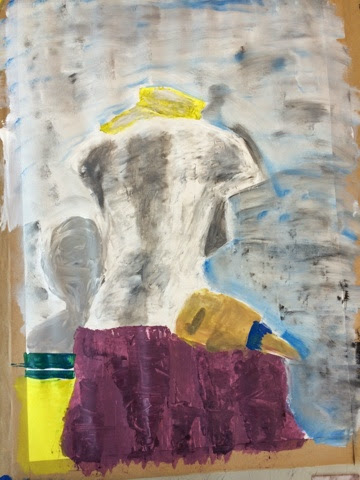Monday, 28 September 2015
Cooper Gallery
Artist research
Thursday, 11 June 2015
Glossary
AVANT GARD:
Applied to art, avant-garde means art that is innovatory, introducing or exploring new forms or subject matter
CARL ANDRE BRICKS
Kinetic art:
is art that depends on motion for its effects
e.g. Alexander Calder- Antennae with Red and Blue Dots 1960
Installation art:
is used to describe mixed-media constructions or assemblages usually designed for a specific place and for a temporary period of time
e.g. Cornelia Parker Cold Dark Matter: An Exploded View 1991 & Rachel Whiteread
Figurative art
Describes any form of modern art that retains strong references to the real world and particularly to the human figure e.g. Picasso
Abstract art
is art that does not attempt to represent an accurate depiction of a visual reality but instead use shapes, colours, forms and gestural marks to achieve its effect; it could be based on a subject such as a figure, landscape or object or may have no source at all in the external world e.g. : Kandinsky
Other Key Words
Liner
Stop motion : Onion skinning
Meditate and synthesis an image
silhouette
Zoetrope: Reciprocal Action & Persistence of vision
Objets trouvés
Theater d'ombre
What is time based media?
Jonathon Borofsky
Christian Boltanski
- 20.07 billionéateurs sans frontières award for visual arts by Cultures France[6]
- 2007 Praemium Imperiale Award by the Japan Art Association[6]
- 2001 Goslarer Kaiserring, Goslar, Germany[6]
- 2001 Kunstpreis, given by Nord/LB, Braunschweig, Germany
Wednesday, 10 June 2015
Final piece
Native American A3
 My second sheet was a colourful sheet which i used brusho inks for however my drawings i either used pen or acrylic paint i believe that using the black and greys on this sheet was effective as the background is very colourful. This sheet i began to develop my ideas again by putting an american flag onto the sheet, i did this to show i had looked into the flag for my final design. I also did a few more sketches of portraits as well as a silhouette. If i were to do this again i may not have used such darker colours for a background so that i can then use more colour in the drawings.
My second sheet was a colourful sheet which i used brusho inks for however my drawings i either used pen or acrylic paint i believe that using the black and greys on this sheet was effective as the background is very colourful. This sheet i began to develop my ideas again by putting an american flag onto the sheet, i did this to show i had looked into the flag for my final design. I also did a few more sketches of portraits as well as a silhouette. If i were to do this again i may not have used such darker colours for a background so that i can then use more colour in the drawings.Tuesday, 9 June 2015
Mental health development
Monday, 8 June 2015
Native Americans (63)
Human rights (63)
Political (63)
Holocaust (63)
Symbols of freedom (63)
Religion (63)
Mental health (63)
Thursday, 21 May 2015
Magna carta
Thursday, 7 May 2015
Matisse...
Forts!!
FMP development of ideas
1st lesson of cardboard city
Tuesday, 28 April 2015
History of zoetrope
19th century, as people experimented with ways to make moving pictures.
The zoetrope appeared first in England in 1834, then France in 1860 and
finally the United States in 1867. The "Daedatelum" was invented by William
George Horner in 1834 and renamed "Zoetrope" by French inventor, Pierre Desvignes. In "zoetrope" you might recognize the root word "zoo" from a Greek word meaning animal or life. "Trope" is also from Greek and refers to things that turn.









































